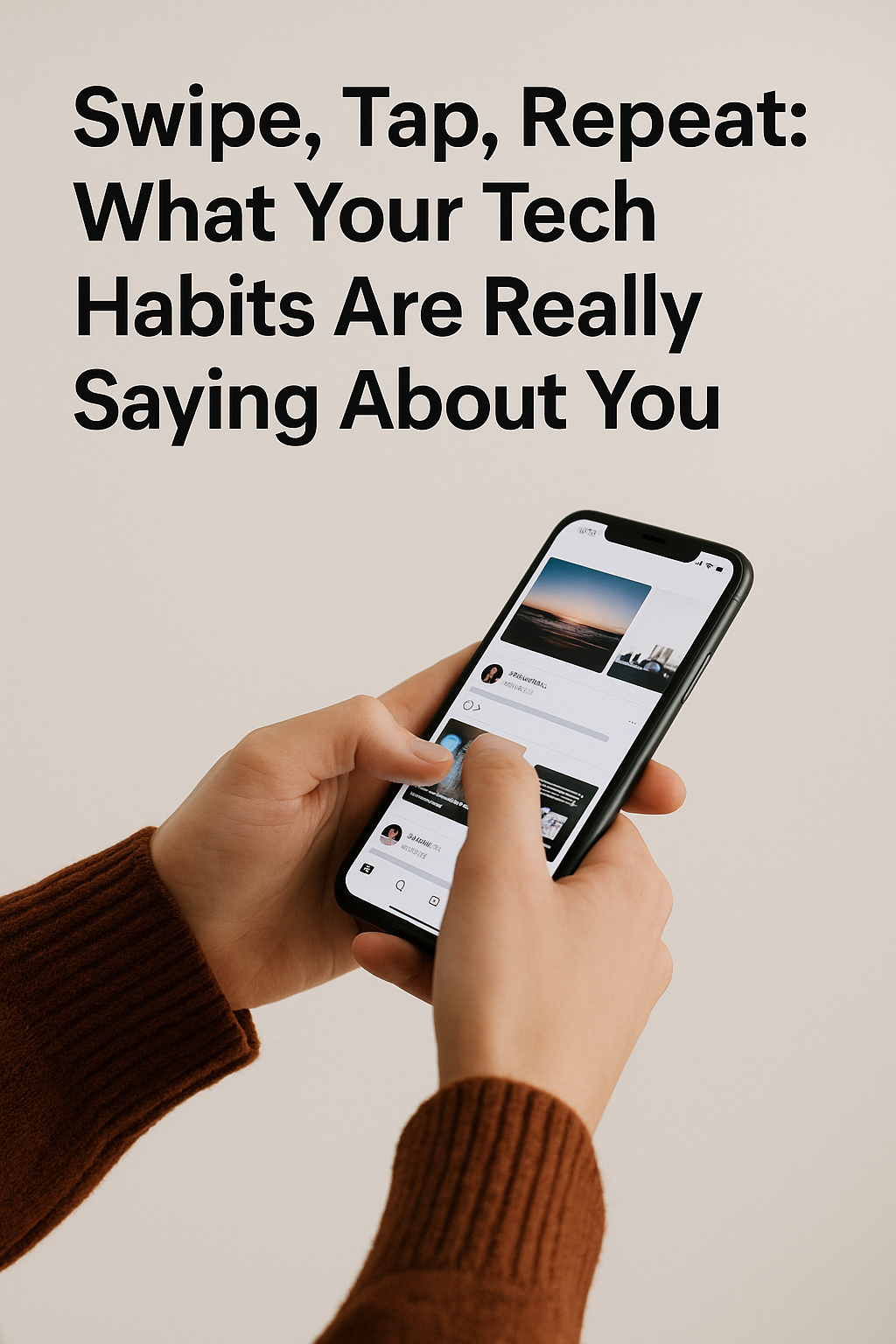You probably don’t remember the last time you unlocked your phone—you just did it. Maybe you checked a message, scrolled a bit on Instagram, or refreshed your inbox out of habit. Before you knew it, ten minutes had disappeared.
These small actions—swiping, tapping, scrolling—might seem automatic. But they’re not accidental. They’ve been shaped, encouraged, and refined by the devices we carry and the apps we live inside. If you’ve ever wondered why it’s so hard to put your phone down, the answer lies not in laziness or lack of willpower—but in design, psychology, and a little brain chemistry.
The Loop You Didn’t Know You Were In
Behavioral psychologists often talk about something called the habit loop. It’s a three-part process our brains use to form routines—and it’s quietly at work every time we “just check” our phones.
Here’s how it plays out in your daily digital life:
| Step | What It Looks Like in Real Life |
|---|---|
| A cue | A ding, buzz, or red badge grabs your attention. |
| A routine | You pick up your phone and start scrolling or replying. |
| A reward | You get a like, a funny video, or the relief of “catching up.” |
What makes this loop so powerful is unpredictability. You might find something exciting… or not. That “maybe” is what keeps your brain coming back for more.
The Chemistry of Craving: How Dopamine Drives the Scroll
Let’s talk about dopamine for a moment. It’s a brain chemical that helps you feel pleasure and satisfaction—but more importantly, it plays a huge role in anticipation. That’s why even seeing a notification light up your screen gives you a little mental jolt.
Apps are designed with this in mind. They often hold back rewards—think of how social media apps delay showing likes or bundle notifications—to build suspense. It’s not about giving you pleasure; it’s about making you want it. That’s the sweet spot for engagement—and for compulsion.
Behind the Screen: Design That Nudges You On Purpose
App designers don’t just hope you’ll use their platforms—they design them to be hard to leave. They know exactly what colors, motions, and layouts nudge you toward more time, more taps, more swipes.
Here are some design choices that aren’t accidents:
| What You See | What It’s Doing Behind the Scenes |
|---|---|
| Endless scroll | Removes stopping points so your brain doesn’t know when to quit. |
| Pull-to-refresh | Mimics slot machines—sometimes you get new stuff, sometimes you don’t. |
| Autoplay next video | Removes the need to choose, keeping you passive and engaged. |
| Likes, hearts, or “streaks” | Offer instant feedback to keep you checking and performing for validation. |
You might think you’re browsing casually, but many of these elements are structured to keep your fingers busy and your mind slightly hooked.
Where Did That Hour Go? How Tech Warps Our Sense of Time
Have you ever planned to check just one message… and suddenly realized half an hour vanished? You’re not the only one. Apps are built to be immersive—on purpose.
Fast animations, fluid layouts, and short-form content all contribute to what’s known as time distortion. You’re pulled into a rhythm where one action leads to the next, and there are no natural pauses. Your brain stops tracking time because it’s focused on the next thing, and the next, and the next.
This is especially common with video-based apps like TikTok, YouTube Shorts, and Instagram Reels, where time passes in bursts and blends together before you know it.
Your Digital Reflection: How Tech Shapes Self-Image
It’s not just what we do with our devices—it’s how they shape how we see ourselves.
Platforms like Instagram and Snapchat don’t just show you other people—they encourage you to present yourself. But what happens when the version you post starts to feel more real than the one off-screen?
We begin comparing. We count likes. We edit photos. We respond to the dopamine hit of social approval and the sting of silence. Over time, this can lead to anxiety, self-doubt, and the nagging sense that we’re never quite “enough.”
And it doesn’t just affect teenagers—adults aren’t immune to this curated performance either.
So, Can You Break the Loop? Actually… Yes.
Let’s be clear—technology isn’t evil. Phones are powerful, and apps can be genuinely helpful. But if you feel like tech is running your day instead of the other way around, here are some gentle ways to push back:
| Try This | Why It Helps |
|---|---|
| Turn off non-urgent notifications | Fewer pings = fewer automatic pickups of your phone. |
| Use your phone in grayscale | Colors grab attention; black-and-white reduces visual triggers. |
| Create no-phone spaces | Try keeping devices out of the bedroom or away from the dinner table. |
| Replace doomscrolling with habits | Swap late-night TikTok for a book or podcast—even five minutes is a win. |
| Use screen time trackers | Awareness is the first step. You may be shocked by how much you scroll. |
You don’t have to delete everything. But you can choose to use tech in a way that fits your life—instead of letting it shape your day by default.
Final Thoughts: You’re Not Broken—The System’s Just Designed Too Well
If you’ve ever felt guilty about screen time or frustrated by your scrolling habits, give yourself some grace. You’re not weak. You’re responding exactly the way your brain is designed to—and the way these tools were built to interact with it.
But that doesn’t mean you’re powerless.
When you become aware of how these tech habits are formed, you can start reshaping them. You can pause before you tap. You can set boundaries without going off the grid. And you can start using your tech on your terms—not just out of habit.
